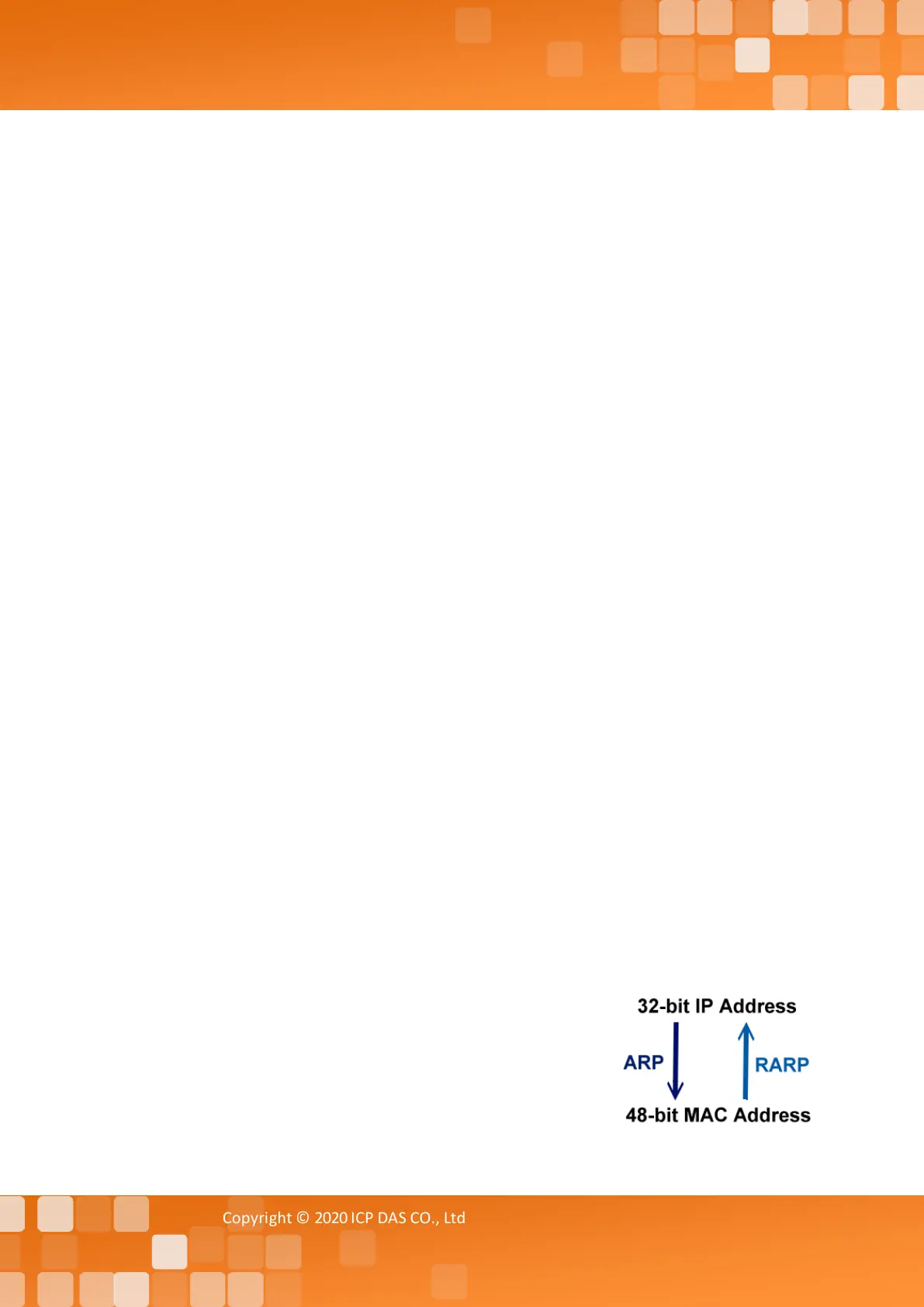Tiny Modbus/TCP to RTU/ASCII Gateway
Copyright © 2020 ICP DAS CO., Ltd. All Rights Reserved. - 106 -
8. IP (Internet Protocol) Address
Each interface on the Internet must have a unique IP address (also called an Internet address).
These addresses are 32-bit numbers, and are normally written as four decimal numbers, one for
each byte of the address for example “192.168.41.1”. This is called dotted-decimal notation.
9. MAC (Media Access Control) Address
To allow a computer to determine which packets are meant for it, each device attached to an
Ethernet network is assigned a 48-bit integer known as its MAC address (also called the Ethernet
address, the hardware address or the physical address). A MAC address is normally written as eight
hexadecimal numbers, for example “00:71:88: AF: 12:3e:0f:01”. Ethernet hardware manufacturers
purchase blocks of MAC addresses and assign them in sequence as they manufacture Ethernet
interface hardware. Thus, no two hardware interfaces can have the same MAC address.
10. Packet
A packet is the unit of data sent across a physical network. It consists of a series of bits containing
data and control information, including the source and the destination node (host) address, and is
formatted for transmission from one node to another.
11. Ping
Ping is a network administration utility used to test the whether a host on an Internet network is
active, and to measure the round-trip time for messages sent from the originating host to a
destination computer. Ping operates by sending an ICMP echo request message to a host, expecting
an ICMP echo reply to be returned. Normally, if a host cannot be pinged, Telnet or FTP cannot be
used to connect to the host. Conversely, if Telnet or FTP cannot be used to connect to a host, Ping is
often the starting point to determine the nature of the problem.
12. RARP (Reverse Address Resolution Protocol)
RARP provides a method of dynamically mapping 48-bit MAC
address to the corresponding 32-bit IP address. RARP has now
been replaced by the Bootstrap Protocol (BOOTP) and the
modern Dynamic Host Configuration Protocol (DHCP).
